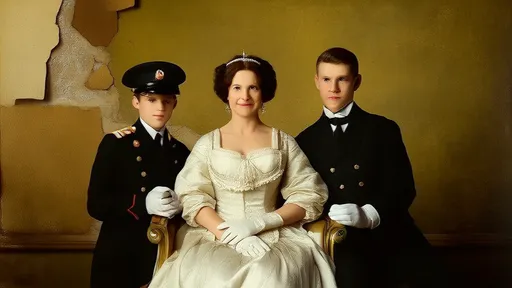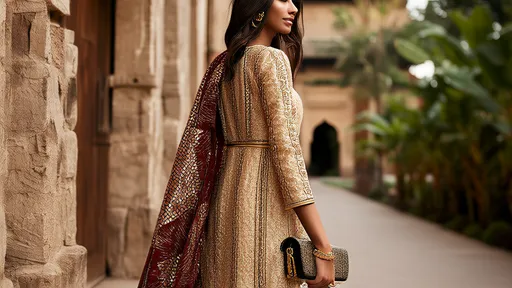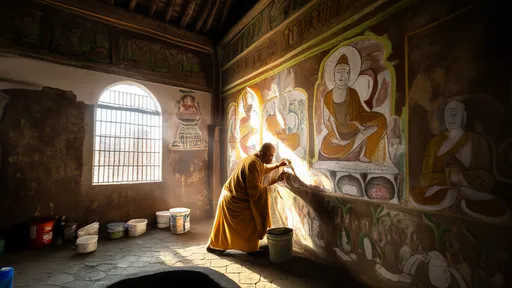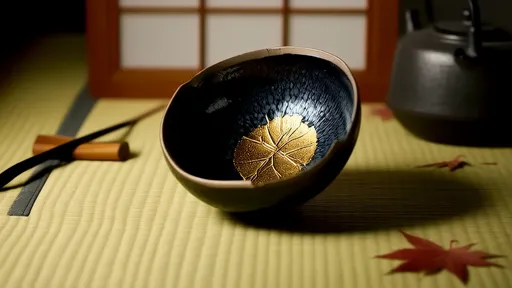The Kani shawl of Kashmir, a textile marvel woven with intricate patterns and vibrant colors, has long been a symbol of luxury and artistry. Originating from the Mughal era, these shawls were once reserved for royalty, their delicate motifs reflecting the grandeur of courtly life. Today, the Kani shawl has undergone a fascinating transformation, blending traditional craftsmanship with contemporary aesthetics. This evolution speaks not only to the resilience of Kashmiri artisans but also to the enduring allure of a heritage that refuses to fade.
At the heart of the Kani shawl’s legacy lies its unique weaving technique. Unlike ordinary shawls, the Kani is crafted using small wooden bobbins called kanis, which are meticulously threaded to create elaborate designs. Each motif—whether a blooming flower, a swirling vine, or an ornate paisley—is woven thread by thread, a process that demands unparalleled patience and skill. Historically, these patterns were inspired by Mughal gardens, Persian miniatures, and the natural beauty of Kashmir, resulting in shawls that were as much works of art as they were garments.
The Mughal emperors, particularly Akbar, were ardent patrons of the Kani shawl, elevating it to a status symbol within their courts. The shawls were often gifted to nobles and foreign dignitaries, their intricate patterns serving as a testament to the empire’s cultural sophistication. Over time, the designs grew more elaborate, incorporating gold and silver threads to enhance their opulence. Yet, despite their royal associations, the Kani shawl also found its way into the wardrobes of the elite across Europe, where it became a coveted fashion statement in the 18th and 19th centuries.
In modern times, the Kani shawl has experienced a revival, albeit with a twist. Contemporary designers have reimagined its traditional motifs, adapting them to suit global fashion trends while preserving the essence of its craftsmanship. The once-rigid courtly patterns now mingle with abstract geometries, minimalist layouts, and even bold, experimental color palettes. This fusion has broadened the shawl’s appeal, attracting a younger, fashion-conscious audience that values both heritage and innovation.
What makes this modern reinterpretation remarkable is its respect for the past. Artisans in Kashmir continue to employ age-old techniques, ensuring that each shawl remains a handmade masterpiece. However, they now collaborate with designers to infuse fresh perspectives into their work. For instance, traditional floral motifs might be rendered in monochrome or paired with unconventional materials like organic silk. Such innovations have not only sustained the craft but also positioned it as a dynamic player in the global luxury market.
The Kani shawl’s journey from royal courts to runways underscores a broader narrative about cultural preservation. In an era of mass production, the survival of such intricate handicrafts relies on their ability to adapt. By embracing modernity without forsaking tradition, the Kani shawl has managed to stay relevant, proving that heritage can thrive in contemporary contexts. Its story is a reminder that true artistry transcends time, evolving yet always retaining its soul.
For collectors and fashion enthusiasts alike, the Kani shawl represents more than just an accessory—it is a piece of history, a canvas of cultural dialogue. Whether draped over shoulders as a statement piece or displayed as a textile art, it continues to captivate with its timeless beauty. As the world rediscovers the value of handmade luxury, the Kani shawl stands as a shining example of how tradition and modernity can coexist in perfect harmony.

By /Jul 9, 2025

By /Jul 9, 2025

By /Jul 9, 2025

By /Jul 9, 2025

By /Jul 9, 2025

By /Jul 9, 2025

By /Jul 9, 2025

By /Jul 9, 2025

By /Jul 9, 2025

By /Jul 9, 2025

By /Jul 9, 2025

By /Jul 9, 2025

By /Jul 9, 2025

By /Jul 9, 2025

By /Jul 9, 2025

By /Jul 9, 2025

By /Jul 9, 2025

By /Jul 9, 2025